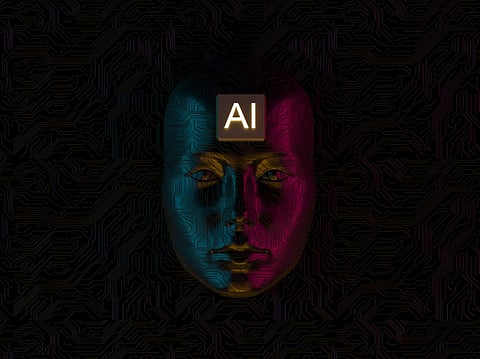When Creativity Meets the Courtroom: AI Art and Copyright Battles
The rise of artificial intelligence (AI) has revolutionized numerous industries, from healthcare to transportation. One of the most intriguing developments has been in the realm of creative expression. AI-powered tools can now compose music, write poetry, and even create visual art. While this innovation opens doors to new forms of creativity, it also presents a unique challenge: how do we define ownership and protect intellectual property when art is generated by algorithms?
The Emergence of AI Art
AI-generated art has surged in popularity over the past decade, thanks to advancements in machine learning technologies such as generative adversarial networks (GANs). Platforms like DALL-E, MidJourney, and Stable Diffusion allow users to generate stunning visuals with just a few text prompts. These tools have democratized artistic creation, enabling individuals without formal training to produce professional-quality artwork. This technology makes art creation more accessible, but it also sparks complex debates about ownership, copyright, and the core of artistic originality.
However, the process behind AI art involves more than just algorithms. These systems are trained on vast datasets, often comprising millions of images, text, or other media. This training data, frequently sourced from the internet, includes copyrighted works, raising questions about the legality and ethics of using such material.
Copyright Laws and AI Art
Copyright laws are designed to protect original works of authorship, granting creators exclusive rights over their creations. But traditional copyright frameworks are ill-equipped to handle the complexities of AI-generated art. Key issues include:
Authorship: Copyright laws typically require a human creator. But who is the "author" of an AI-generated piece? Is it the developer of the AI model, the user providing prompts, or the AI itself? U.S. courts, for example, have consistently ruled that non-human entities cannot hold copyrights, leaving AI-generated art in a legal gray area.
Training Data and Infringement: AI models rely on copyrighted works for training, often without explicit permission from the original creators. Critics argue that this constitutes a form of copyright infringement. On the other hand, proponents claim that such use falls under "fair use" exemptions, as the data is not directly replicated but transformed into new outputs.
Derivative Works: If AI-generated art resembles copyrighted works, does it qualify as a derivative work? Determining the threshold for similarity is subjective, making legal disputes in this area particularly contentious.
Landmark Lawsuits and Cases
As AI art gains prominence, legal battles have begun to shape its future. Notable cases include:
Getty Images vs. Stability AI: Getty Images filed a lawsuit against Stability AI, alleging that the AI company used millions of its copyrighted images without permission to train its Stable Diffusion model. This case highlights the broader debate over whether training data derived from copyrighted works constitutes infringement.
Zarya of the Dawn Case: In 2022, the U.S. Copyright Office granted copyright to an AI-assisted comic book, "Zarya of the Dawn," only to revoke it later upon realizing the artwork was created using MidJourney. The incident underscores the uncertainty surrounding the copyrightability of AI-generated art.
Ethical Implications
Beyond legal concerns, AI-generated art raises ethical questions. Traditional artists argue that AI models, trained on their work, exploit their creativity without providing proper credit or compensation. The ease of generating high-quality visuals with AI tools also threatens to devalue human artistry and flood markets with low-cost alternatives.
On the flip side, supporters argue that AI democratizes creativity, making art accessible to more people. They view AI as a tool for collaboration rather than competition, enabling artists to push creative boundaries and explore new possibilities.
Potential Solutions and Path Forward
Resolving the copyright challenges of AI art requires a multifaceted approach that balances innovation with fairness. Possible solutions include:
New Legal Frameworks: Legislators could establish new rules specifically addressing AI-generated works. For instance, hybrid authorship models could grant shared rights to developers, users, and even contributors of training data.
Licensing Agreements: AI developers could negotiate licensing agreements with copyright holders to use their works for training, ensuring fair compensation for original creators.
Transparency and Attribution: Requiring AI systems to disclose the sources of their training data and provide attribution to original creators could foster greater accountability.
Fair Use Guidelines: Clearer guidelines on what constitutes fair use in the context of AI training data could help resolve disputes preemptively.
The Role of Artists and Innovators
While the courtroom battles continue, artists and innovators have a role to play in shaping the future of AI art. Traditional artists can advocate for policies that protect their rights, while also exploring how AI can enhance their craft. Meanwhile, developers of AI tools must prioritize ethical considerations, designing systems that respect intellectual property and encourage creative collaboration.
Conclusion
The intersection of AI art and copyright is a complex, evolving landscape. As courts, lawmakers, and creators grapple with these challenges, the outcomes will set critical precedents for the future of creativity. Striking the right balance between fostering innovation and safeguarding artistic rights will ensure that AI remains a force for empowerment rather than exploitation. In the meantime, the courtroom will continue to be a stage where creativity and legality collide, shaping the future of art in the age of machines.
Inspired by what you read?
Get more stories like this—plus exclusive guides and resident recommendations—delivered to your inbox. Subscribe to our exclusive newsletter
Resident may include affiliate links or sponsored content in our features. These partnerships support our publication and allow us to continue sharing stories and recommendations with our readers.

